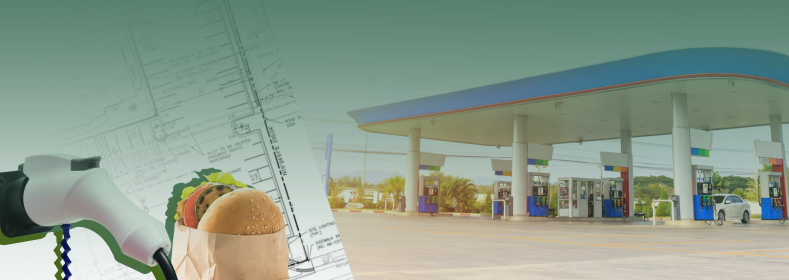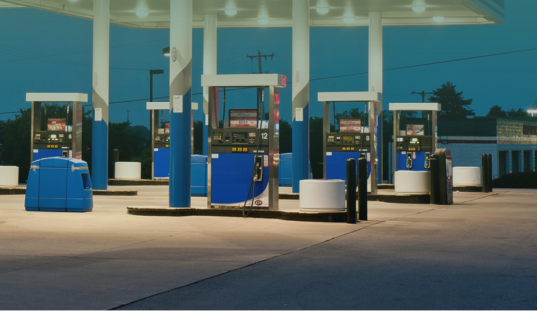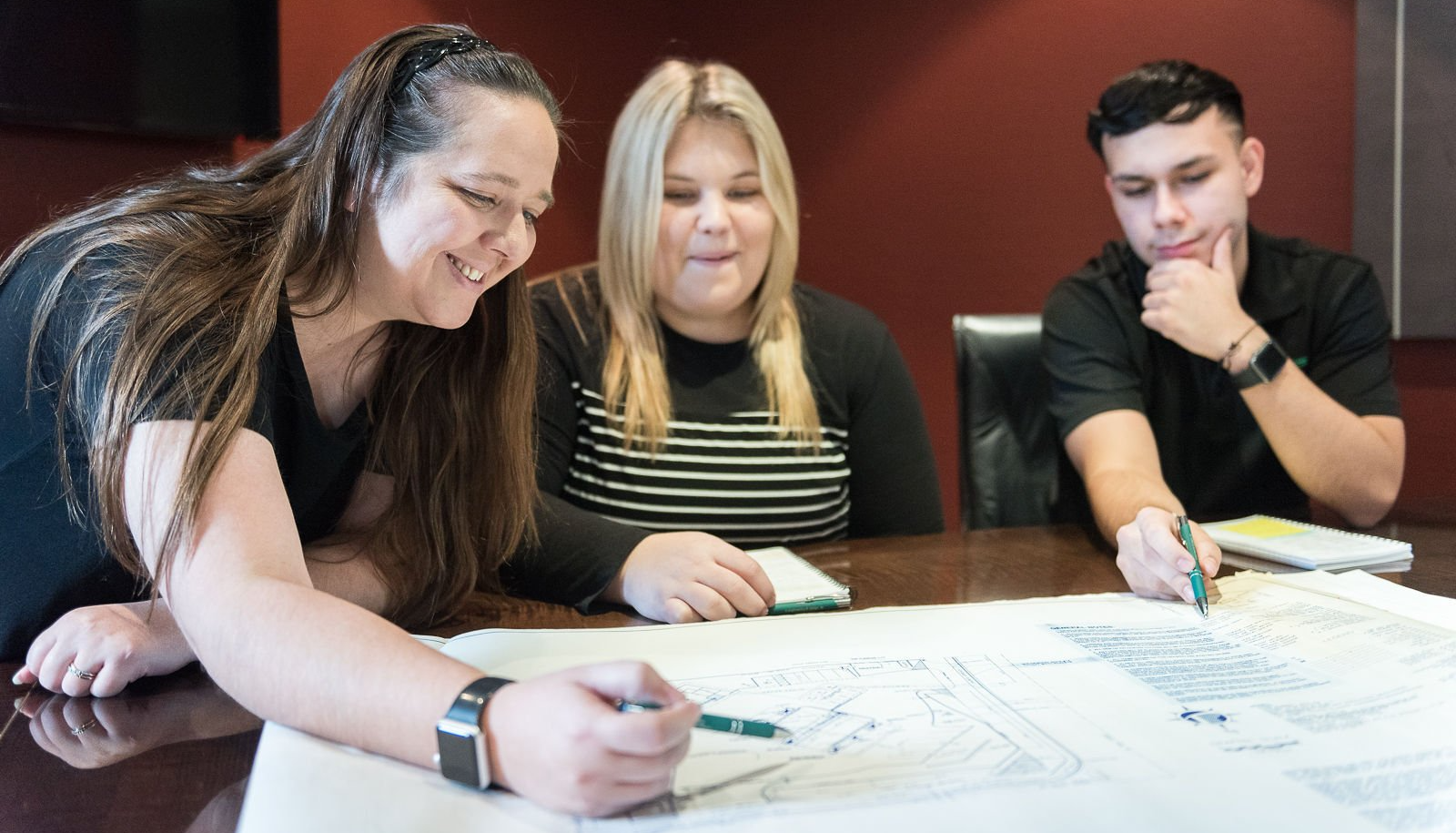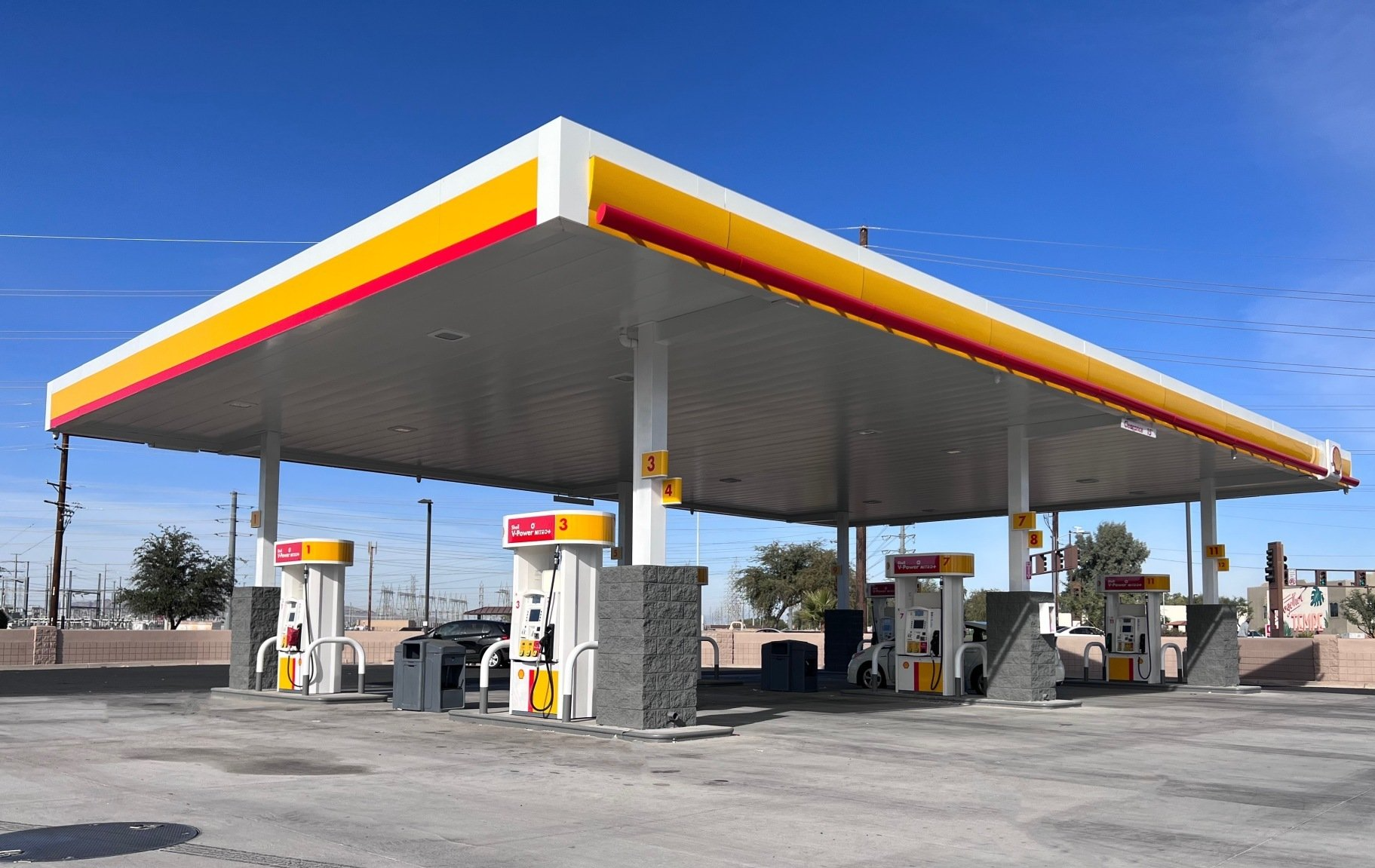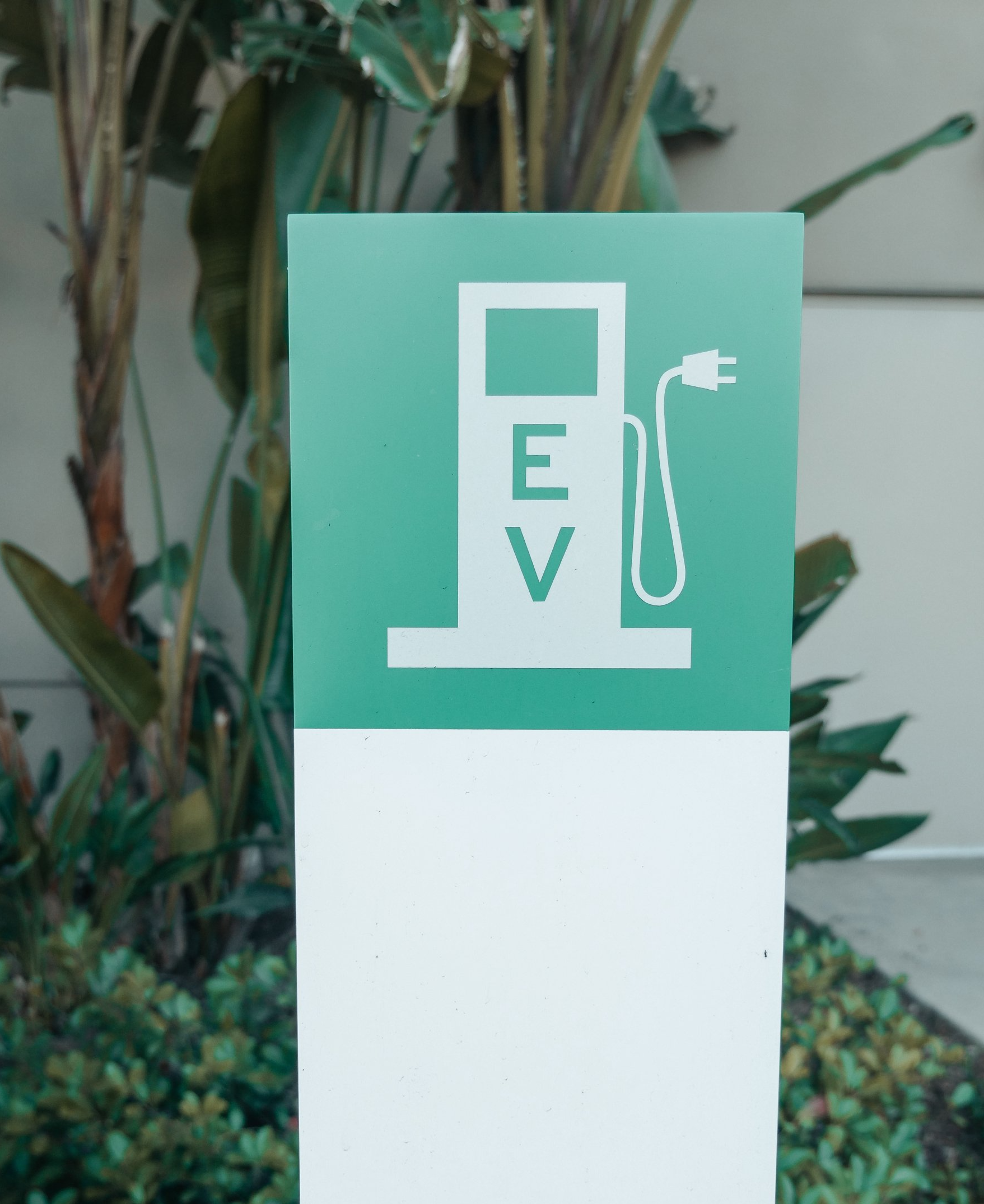Multi-location Fuel Station Upgrades: What You Should Know
Overcome Challenges Associated with Upgrading Multi-location Fuel Stations
Upgrading one fuel station is difficult enough as it is. But when you’re upgrading multiple fuel stations at once, if you’re not incredibly organized, you can find yourself running into many problems.
Multiple fuel station upgrades require an intense level of planning, organization, and project management to get right. These projects often have several layers of complexity and a higher degree of risk, even with small gas stations.
But by understanding the challenges associated with multi-location gas station upgrades, you and your team can plan more effectively to avoid costly delays and budget overruns—ultimately making your upgrade more profitable.
With countless gas station upgrades across multiple locations under our belt here at KE Design, covering every aspect from design to project management, we thought we’d help you prepare for your next multi-location project.
So, what do you need to know about upgrading multiple gas stations at once? Just keep reading as we’re going to talk about key challenges, like:
- Tight Deadlines
- High Expectations
- Corporate Pressure
- The Distance Between the Fuel Stations
- Knowing and Understanding Multiple Building Codes
What to Consider When Upgrading Multiple Gas Stations At Once

From the design phase and securing permits to product ordering and construction, there are many factors to keep track of in a multi-location gas station upgrade project where there are multiple gas pumps, tanks, and infrastructure components to get on site.
That’s why you need to be as prepared as possible to avoid failing fire department or building department inspections due to poor planning. Below are the key things you need to consider when upgrading multiple fuel stations at once to help you better prepare for a successful installation.
1. Tight Deadlines

When a fuel business is planning, project managing, and executing many gaseous fuel station upgrades at once, already tight deadlines become even tighter.
And since you’re ordering much larger material quantities, if you don’t plan ahead properly for all products and equipment to arrive on-site at the right times, one “out-of-stock” product can throw your entire project off for weeks or even months.
Planning gas, alternative fuel, and c store infrastructure supplies well in advance to coincide with the timing of main events in your project is key and will help keep every construction step in the right order.
Map out when and where each main activity will happen to ensure you can order materials well in advance and account for unpredictable shipping delays or stock issues.
2. High Expectations

There is a lot more money at stake when upgrading multiple fuel stations at once, and with a higher cost, there will inevitably be higher expectations. Additionally, gas prices and alternative fuel prices are increasing every day in this unpredictable market, so every cent counts.
What can you do to make sure you don’t overpromise and underdeliver?
Of course, plenty of upfront planning is absolutely essential. Keeping all key figures involved in the project from the beginning will help set expectations and put everyone on the same page.
During planning meetings, ensure you’re reviewing and agreeing on key dates, major decisions, and actions in advance, and if anything changes, you need to keep everyone informed.
This will help you establish trust in project leadership and management right from the start, help manage expectations, and get the support of those funding your gas station upgrade project.
3. Corporate Pressure

Large investments mean higher risks. If something goes wrong, key stakeholders could potentially lose a lot of money. Plus, upgrading several gas stations is something that can either make or break their reputation and harm future growth. So, how can you deal with this pressure?
You need a project manager on your team who can see the forest from the trees, but also focus on each tree (or project component) individually—measuring its progression against KPIs and spotting issues before they become major problems.
You must be able to report progress on a macro and micro level to the corporate team, key stakeholders, and project partners at all times and take a proactive communication approach to quell any doubts and prove you’re staying on time and on budget.
4. The Distance Between the Fuel Stations

Since you can’t have a physical presence at every gas station site every day, you need to be able to hand over aspects of the upgrade project to a team you can trust.
Take careful consideration during the hiring process to find a team with proven experience and don’t rush this step. Make sure you conduct thorough interviews and background checks to ensure you’re hiring the right firm to complete the job.
You also want to map out all the events in your fuel station remodeling timeline and decide which ones you need to physically attend. Otherwise, you’ll waste time traveling to fuel station locations that don’t need you there while missing important events at remodels that do.
5. Knowing and Understanding Multiple Building Codes
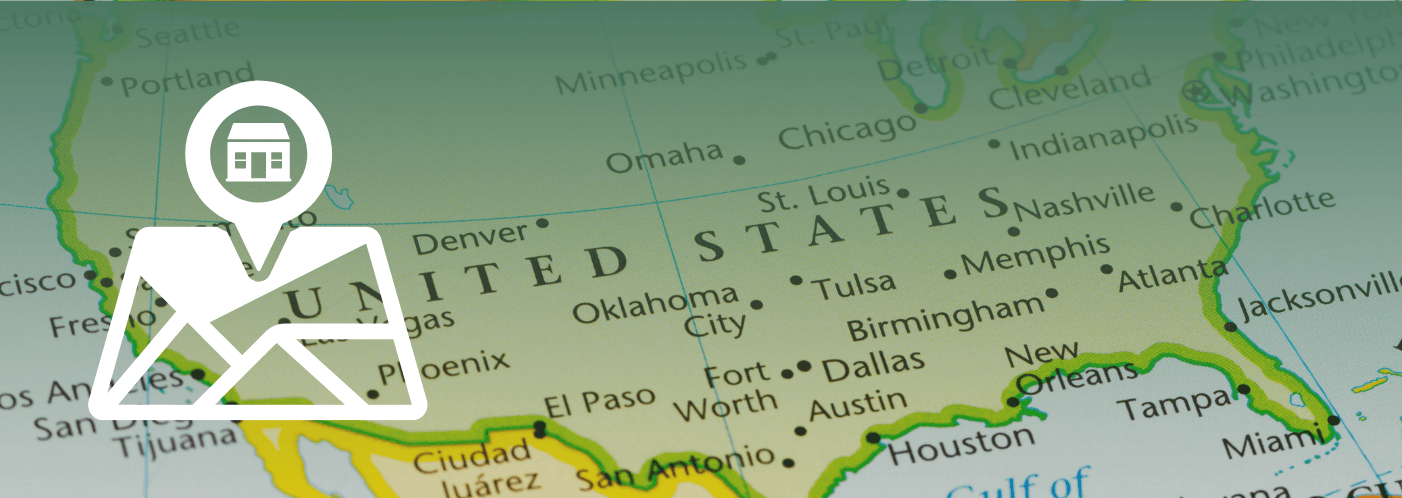
Every state in the U.S. has its own set of building codes and regulations to abide by—and so does every town. As you can imagine, this really complicates matters when you’re attempting to build consistent fuel station upgrades across several towns and states.
To ensure your project gets approved in the permitting process and passes any future inspections, it’s imperative that you work with an architect who has a comprehensive understanding of building codes for every fuel station location.
Your team will also need the project management talent, tools, and technology to be able to track every building permit, respond to any questions from the building department, and make design changes as needed to get approved.
Hiring a Fuel Station Design Expert Will Make Managing Multiple Remodels Easier
Hiring an expert in fuel station design, architecture, project management, and construction, like KE Design, will help maximize your profits by preventing costly mistakes, streamlining the process, and minimizing delays.
Here is how KE Design can help your business manage the five challenges above, allowing you to be as hands-on or off as you want throughout your fuel station remodel projects.
Our Process Helps Stay On Top of Tight Deadlines
At KE Design, we have decades of project management expertise and a strict set of processes that keep our fuel station design projects on track and economical costs to a minimum.
High Expectations
Whether you need 5 gas station upgrades or 500, we have a proven track record of delivering projects within the specified timeframe and cost parameters to meet expectations.
Corporate Pressure
We’re the point of contact for your project to help you secure stakeholder buy-in and keep your higher-ups informed with an “always on” communication approach.
Fuel Station Distance
Our project management and architecture team become your eyes and ears for every project, attending fuel station sites as and when required to oversee progress and report back.
Multiple Building Codes
Our architects have extensive knowledge of building codes and regulations across many US states and towns and will liaise with the local building department for each location and public safety officials to manage the entire permitting process.
Need A Team That Can Make Managing Multi-Location Gas Station Upgrades Look Easy?
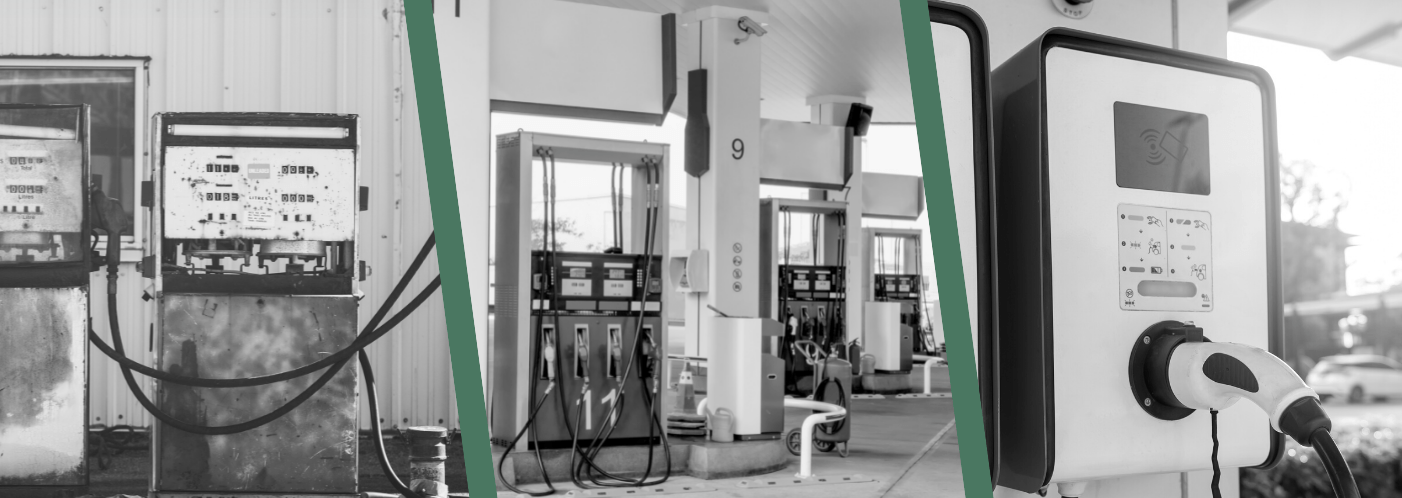
As we’ve discussed, managing multiple fuel station upgrades at once requires months if not years of upfront planning to get right. Put your project in the wrong hands, and you risk going over budget, missed deadlines, construction errors, and even reputation damage.
But working with the right team for project management and architecture services will ensure your gas station project runs smoothly, avoids delays, and makes the most revenue long-term.
And with changing consumer behavior and new fuel station systems driving upgrades at a faster speed, it’s vital you start shaping solid, strategic, and careful processes for fuel station remodels across numerous locations today.
Learn more about the future of fuel stations in our previous blog, “How Technology will Fuel the Future of Gas Station Design.”
Need help managing all the moving parts of your gas station upgrade project?
Talk to our architecture and project management experts here at KE Design.
At KE Design, we become your reliable, responsible, and responsive partner, helping you plan and execute groundbreaking designs that fuel the future for your service station or convenience store operations.
If you're interested in working together on an upcoming fuel station upgrade project, we'd love to hear from you! See how much better it feels to work with an architecture firm that really knows the fuel industry.
Tell us about Your Project!
Looking to remodel an existing fuel station or upgrade multiple locations across the country?
You're in the right place! We're here to guide you every step of the way.
Start by telling us about your project to request your intro call.
Share this post!


